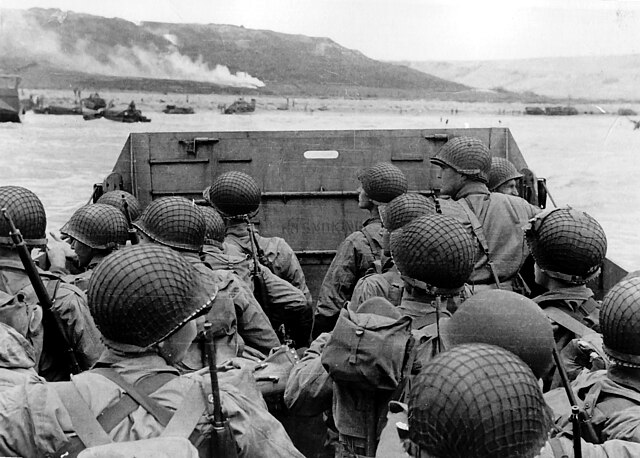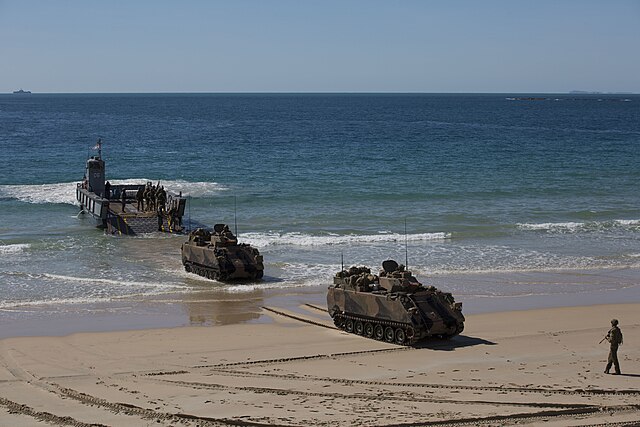Landing craft are small and medium seagoing watercraft, such as boats and barges, used to convey a landing force from the sea to the shore during an amphibious assault. The term excludes landing ships, which are larger. Production of landing craft peaked during World War II, with a significant number of different designs produced in large quantities by the United Kingdom and United States.
Landing Craft, Vehicle, Personnel (LCVP) used in the Invasion of Normandy in World War II
Dutch landing craft
Finnish Jehu-class landing craft
The Soviet-built PTS-M is an unarmoured, fully tracked landing craft that was designed to transport troops or equipment inland.
Amphibious warfare is a type of offensive military operation that today uses naval ships to project ground and air power onto a hostile or potentially hostile shore at a designated landing beach. Through history the operations were conducted using ship's boats as the primary method of delivering troops to shore. Since the Gallipoli Campaign, specialised watercraft were increasingly designed for landing troops, material and vehicles, including by landing craft and for insertion of commandos, by fast patrol boats, zodiacs and from mini-submersibles. The term amphibious first emerged in the United Kingdom and the United States during the 1930s with introduction of vehicles such as Vickers-Carden-Loyd Light Amphibious Tank or the Landing Vehicle Tracked.
A Crusader tank landing on a beach from a Tank Landing Craft in a 1942 test
South Korean Type 88 K1 MBT comes ashore from an American LCAC in March 2007.
Two Australian M113s disembarking from a landing craft during a training exercise in 2019
The Bayeux Tapestry depicts the 1066 Norman invasion of England with a force of some 8,000 infantry and heavy cavalry landed on the English shore.








